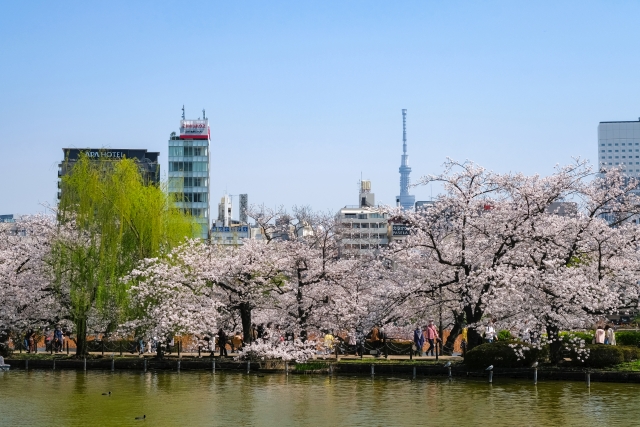2025.03.04
2025Tokyo’s Best Hanami Spots and Sakura-Inspired Kaiseki
By Chef Yuuki Tanaka, owner of Ise Sueyoshi — Tripadvisor Best of the Best: Japan #1, World #12.(source).
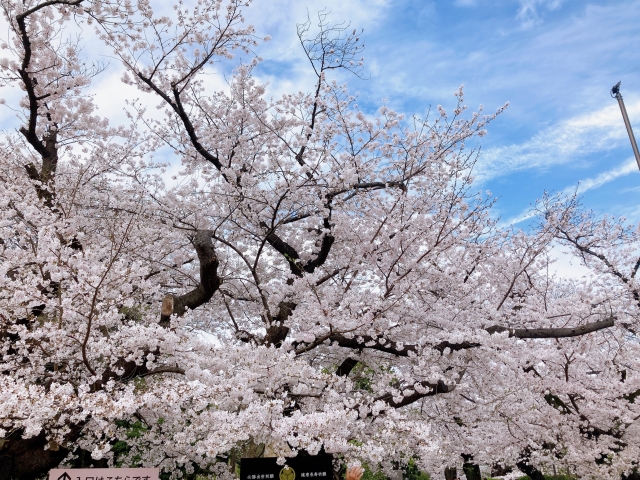
What You’ll Learn in This Article
- When and where cherry blossoms (sakura) bloom in Tokyo — including hidden spots beyond the famous parks
- The cultural significance of cherry blossoms in Japan’s seasonal and spiritual calendar
- What “Hanami” truly means, beyond just a picnic under trees
- How Japan celebrates Buddha’s birthday through “Hana Matsuri” and the use of “ama-cha” (sweet tea)
- How Ise Sueyoshi incorporates sakura in its kaiseki cuisine during cherry blossom season
Essential Sakura Forecast
When Will Spring Arrive in Tokyo in 2025? The Ultimate Guide to Enjoying Cherry Blossoms
Cherry blossom season is a highly anticipated event for travelers visiting Japan. Since the timing of cherry blossoms varies slightly by city, Tokyo’s best viewing period typically falls from late March to early April. However, factors such as temperature and weather conditions can affect the blooming period, making it essential to gather up-to-date information in advance.
In this guide, we provide the 2025 cherry blossom forecast, tips for the best hanami (flower viewing) experience, and a way to enhance your cultural journey with kaiseki dining.
2025 Tokyo Cherry Blossom Forecast
In 2025, Tokyo’s cherry blossoms are expected to start blooming around March 21. The peak bloom is anticipated between late March and early April, though weather conditions may cause slight variations. Typically, cherry trees in central Tokyo bloom earlier than those in the suburbs.
Tokyo’s 2025 Cherry Blossom Viewing Period
📌 Predicted Bloom Date: Around March 21
📌 Predicted Full Bloom: March 28 – April 3
📌 Best Viewing Period: About one week after blooming (subject to weather conditions)
If you’re planning a trip to Tokyo, scheduling your hanami between March 25 and April 5 will give you the best chance to enjoy cherry blossoms at their peak.
Different Cherry Blossom Varieties and Their Blooming Times
- Early-blooming Cherry Blossoms (Kawazu-zakura): Late February – Early March
- Somei Yoshino (Tokyo’s Main Cherry Blossom Type): Late March – Early April
- Late-blooming Cherry Blossoms (Yaezakura): Mid to Late April
Best Times for Cherry Blossom Viewing
To make the most of the cherry blossom season, consider the best timing and strategies to avoid crowds:
✔ Weekday Mornings for a Peaceful Experience
Weekend crowds can be overwhelming, so visiting in the morning on a weekday ensures a quieter and more relaxed hanami.
✔ Catch the Blossoms Before Full Bloom
While peak bloom is stunning, freshly opened cherry blossoms before full bloom offer a unique beauty. Visiting a little earlier may also help you avoid the biggest crowds.
✔ Enjoy Nighttime Illuminations
Many cherry blossom spots have evening light-ups, creating a magical, dreamlike atmosphere. Witnessing both daytime and nighttime cherry blossoms allows you to experience two distinct settings.
✔ Explore Cherry Blossoms in the Suburbs
Cherry trees in central Tokyo bloom earlier and attract large crowds. Consider visiting suburban areas for a more tranquil and unhurried experience.
And after your hanami, why not continue your cultural journey with Japanese cuisine?
Weather & Cherry Blossom Viewing
Cherry blossoms are highly sensitive to weather conditions, with their peak beauty lasting about a week. However, factors like strong winds and rain can shorten their lifespan.
🌦 How Weather Affects Hanami
Sunny Days: The contrast between cherry blossoms and a blue sky is breathtaking—perfect for picnics.
Cloudy Days: Soft lighting enhances photos and crowds tend to be smaller.
Rainy Days: Rain may cause petals to fall quickly, so bringing an umbrella and raincoat is advisable.
Since predicting the exact bloom timing is challenging, consider indoor activities or dining experiences alongside hanami plans to make the most of your spring trip!
Plan Smart & Make the Most of Tokyo’s 2025 Cherry Blossoms
To fully enjoy Tokyo’s cherry blossoms in 2025, check the latest forecasts and consider the weather and time of day when making plans. Adjust your schedule to:
✔ Visit before full bloom to avoid crowds
✔ Experience the mesmerizing nighttime illuminations
✔ Choose hanami spots based on your preferences—festive or tranquil By carefully planning your visit, you can immerse yourself in one of Japan’s most beautiful seasonal experiences.
Savoring Cherry Blossoms
The Japanese Love for Cherry Blossoms: Hanami, a Traditional Spring Celebration
Cherry blossom viewing, or hanami, is one of Japan’s most cherished spring traditions. While plum blossom appreciation was popular in the Nara period (8th century), cherry blossoms gained prominence in the Heian period (9th–12th century), when nobles hosted poetry gatherings under the blooming sakura trees. By the Edo period (17th–19th century), hanami had spread to the common people, and today, it remains a beloved custom throughout Japan.
Cherry blossoms are not only admired for their beauty but also for their ephemeral nature, symbolizing the fleeting moments of life. This aesthetic sensibility closely aligns with kaiseki cuisine, where each dish reflects the passing of the seasons.

How to Enjoy Hanami
Bring a Picnic Blanket
In parks or along riverbanks, people often sit on the ground for hanami. A waterproof picnic blanket is ideal, and in popular spots, securing a place early in the morning is recommended.
Prepare a Picnic
Hanami is incomplete without bento boxes, seasonal wagashi (Japanese sweets), and sake. Conveniently, department stores and convenience stores offer special hanami-themed meals during the season.
Stay Comfortable
Spring weather can be unpredictable, so bringing a blanket and warm clothing ensures a pleasant experience.
Came to Japan, but the cherry blossoms haven’t bloomed yet?
In that case, we recommend enjoying the plum blossoms instead! Hanami in Japan: Cherry Blossoms or Plum Blossoms? |
A Sensory Celebration of Spring
✔ Sight: Admire the stunning sakura-lined paths and petals fluttering in the wind.
✔ Sound: Listen to the rustling of trees and the cheerful voices of people enjoying the season.
✔ Touch: Feel the gentle warmth of the spring breeze.
✔ Smell: Enjoy the subtle fragrance of cherry blossoms and seasonal ingredients.
✔ Taste: Experience spring flavors, just like in kaiseki cuisine, where every dish showcases the season’s bounty.
As the petals begin to fall, sakura snowflakes (sakurafubuki) create a breathtaking scene. At night, illuminated cherry trees reveal an entirely different kind of beauty.
Read more: What is Kaiseki cuisine?
Hanami Etiquette & Manners
Take Your Trash Home
Public trash bins are scarce, so bringing a garbage bag is a must.
Respect Shared Spaces
Do not occupy excessive space with your picnic blanket, and secure it properly to prevent it from being blown away.
Enjoy Quietly
Especially during night hanami, avoid loud conversations and be considerate of others and nearby residents.
Alcohol Consumption in Public
Drinking in parks is generally allowed, but avoid excessive drinking that may disturb others. Some locations prohibit alcohol, so check local regulations in advance.
Kaiseki Cuisine and Hanami: A Shared Philosophy
Hanami is a cultural practice that celebrates seasonal transitions—a principle deeply embedded in kaiseki cuisine as well. Just as each dish in kaiseki embodies the essence of the season, cherry blossom viewing is about appreciating the beauty of the present moment. Why not embrace Japan’s seasonal aesthetics both under the cherry trees and through the exquisite flavors of kaiseki cuisine?
Prestigious Viewing Locations
Ueno Onshi Park(Classic Cherry Blossom Spot)
Spring in Tokyo is a special time when the city is adorned with the beauty of cherry blossoms. Among the many famous hanami spots, Ueno Onshi Park and Chidorigafuchi stand out as places where you can fully immerse yourself in Japan’s seasonal beauty. Here’s what makes them special.
Ueno Onshi Park: Japan’s Largest Hanami Festival
A beloved cherry blossom viewing spot since the Edo period, Ueno Onshi Park is home to approximately 800 cherry trees that create a breathtaking tunnel of pink blooms each spring.
Highlights
✔ Over 1 km of cherry blossom-lined pathways
✔ Enchanting nighttime cherry blossoms illuminated by traditional lanterns
✔ “Ueno Sakura Festival”, featuring food stalls and seasonal events
🚶♂️ Access & Recommended Visit Times
📍 2-minute walk from JR Ueno Station (Park Exit)
⏰ Best times: Weekday mornings (6:00–9:00) or evening illuminations (18:00–21:00)
📸 Best Photo Spots
✅ Cherry blossom tunnel – A romantic view surrounded by pink blossoms
✅ Shinobazu Pond – Stunning reflections of cherry blossoms on the water, with boats adding a scenic touch
Historic Garden Experiences
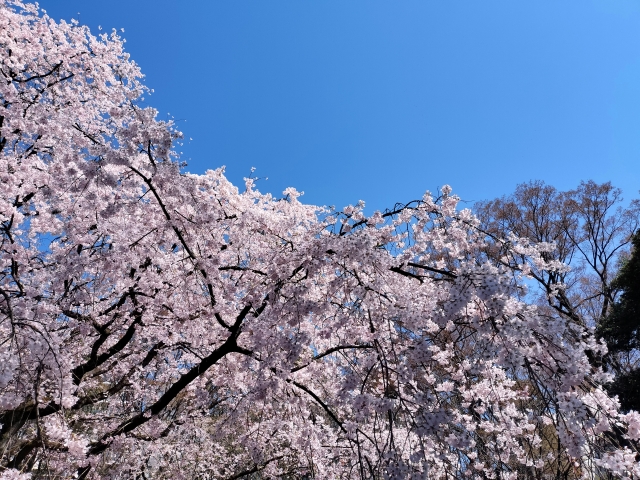
Tranquil Cherry Blossom Viewing in a Historic Garden: Rikugien
Cherry blossom viewing in Tokyo isn’t just about the beauty of the flowers—it’s also about appreciating the history and cultural ambiance surrounding them. Unlike modern parks, Edo-period daimyo (feudal lord) gardens offer a serene and sophisticated hanami experience. One of the finest examples is Rikugien Garden.
Rikugien: A Symbol of Edo-Era Aesthetics and Tranquility
Built in 1702 by Yanagisawa Yoshiyasu, a trusted aide of Tokugawa Tsunayoshi, Rikugien is a strolling garden designed around classical Japanese poetry themes. The highlight of its cherry blossom season is a massive weeping cherry tree (shidare-zakura).
Highlights of Rikugien
✔ 15m tall, 20m wide weeping cherry tree – A breathtaking sight resembling a cascading pink waterfall
✔ Perfect harmony between cherry blossoms and the garden’s pond, creating an atmosphere of quiet elegance
✔ Evening illuminations, transforming the garden into a mystical scene
🚶♂️ Access & Recommended Visit Times
📍 7-minute walk from JR Yamanote Line Komagome Station
⏰ Best times: Morning tranquility (9:00–11:00) or evening illuminations (18:00–20:30)
📸 Best Photo Spots
✅ Cherry blossoms against a traditional Japanese garden backdrop – Capturing the timeless elegance of Edo Japan
✅ Illuminated sakura at night – A mesmerizing contrast between light and shadow
RIKUGIEN PARK OFFICIAL WEBSITE
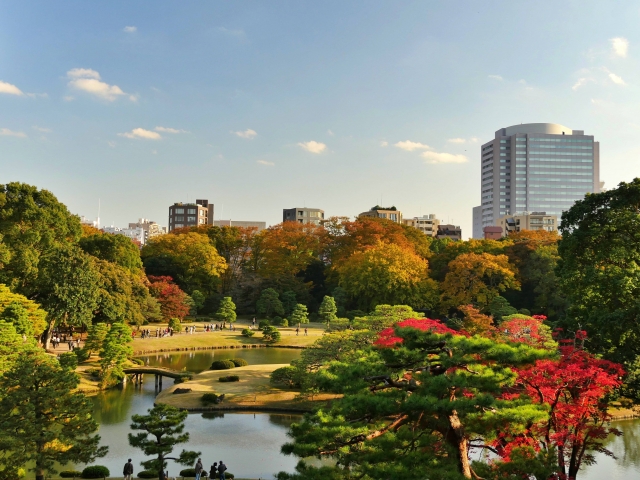
Sakura Night Illuminations
Magical Nighttime Sakura Illuminations: Meguro River
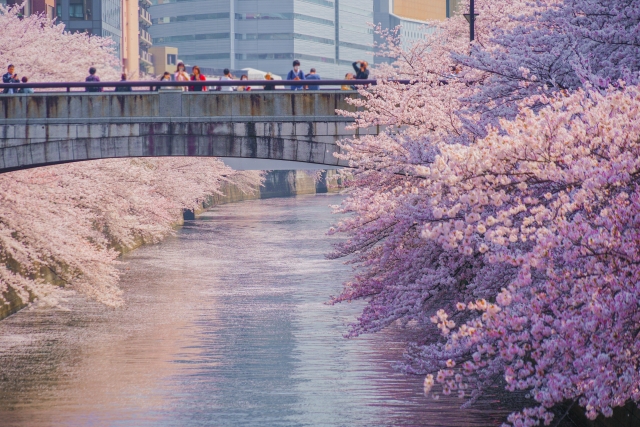
While cherry blossoms are stunning in the daytime, sakura at night takes on an entirely different, almost dreamlike beauty. Under the dark sky, the blossoms glow with light, creating an enchanting and serene yet festive atmosphere.
Meguro River: Tokyo’s Most Romantic Nighttime Hanami Spot
Lined with 800 cherry trees stretching over 4 km, Meguro River transforms into a tunnel of cherry blossoms in spring. By day, the reflection of the blossoms on the river creates a picturesque scene. By night, lanterns and LED lights illuminate the petals, turning the river into a glowing corridor of pink and white.
🌸 Highlights
✔ Cherry blossom-lined bridges – The perfect vantage point for capturing the floral canopy
✔ Reflections of the blossoms on the water – A stunning mirror effect of light and petals
✔ Meguro River Sakura Festival – Enjoy seasonal treats from local food stalls while strolling beneath the illuminated blossoms
🚶♂️ Access & Crowd Levels
📍 1-minute walk from Nakameguro Station
⏰ Best time: 18:30–21:00 (Weekends are extremely crowded, so visiting on a weekday is recommended)
💡 Illumination period: Late March–Early April (Sunset–22:00)
Tips for Enjoying Night Hanami Comfortably
🌡 Dress Warmly – Nights can be chilly, so bring a coat, scarf, and hand warmers
📷 Photography Tips – Use night mode and a tripod to reduce blurring. Backlit shots of sakura create a striking effect
⏳ Recommended Night Hanami Schedule
✔ 17:00–18:00 – Warm up with dinner before heading out
✔ 18:30–20:00 – Enjoy hanami and take stunning photos
✔ 20:00–21:30 – Unwind at a nearby café or bar for a relaxing end to the evening
Information about Nakameguro Sakura Festival 2025
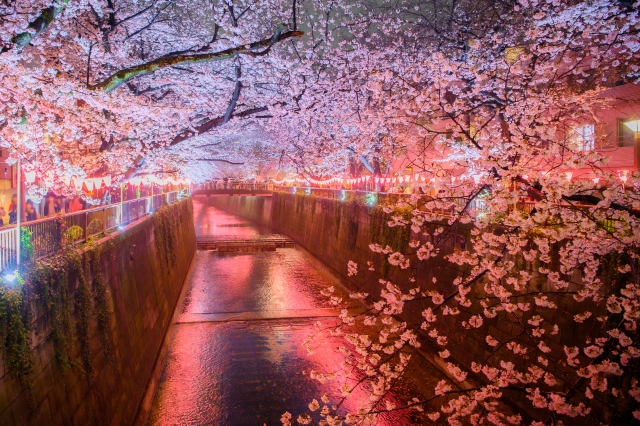
More Sakura Spots
Tokyo is home to numerous stunning cherry blossom spots. While lively parks are perfect for a festive hanami experience, those seeking a more serene atmosphere will find traditional gardens and waterfront locations ideal for enjoying the beauty of sakura.
🌸 Chidorigafuchi – Located along the moat of the Imperial Palace, this area boasts around 260 cherry trees. Visitors can rent a boat and admire the reflection of the blossoms on the water. The illuminated cherry trees at night create a truly magical atmosphere.
🌸 Shinjuku Gyoen – With an admission fee, the park remains less crowded, offering a tranquil and elegant hanami experience. A variety of cherry trees bloom at different times, allowing for an extended viewing season.
🌸 Hama-rikyu Gardens – A historic Edo-period daimyo garden where cherry blossoms harmonize beautifully with traditional Japanese landscapes. The tidal pond and historic teahouses enhance the refined atmosphere.
🌸 Koishikawa Korakuen – This garden, historically tied to the Tokugawa clan, features cherry trees surrounding a central pond. The scenic beauty of this strolling garden offers a uniquely Japanese hanami experience.
🌸 Sumida River Cherry Blossom Festival – A spectacular setting where rows of cherry trees bloom with the Tokyo Skytree as a backdrop. The Sumida River Cruise offers a unique way to enjoy the blossoms, with a different charm between day and night.
Each of these locations showcases a different aspect of cherry blossoms in Tokyo. Whether you prefer a lively festival atmosphere or a quiet, historical setting, there’s a perfect hanami experience waiting for you. Enjoy the beauty of spring in a way that suits your style.
Seasonal Kaiseki Delights
As cherry blossoms herald the arrival of spring in Japan, the culinary world also embraces the season’s bounty. Among Japan’s finest dining experiences, kaiseki cuisine elevates seasonal ingredients, delicately capturing the essence of each moment. Spring kaiseki features sakura sea bream, bamboo shoots, and mountain vegetables, offering flavors that celebrate the season through taste, aroma, and presentation.
This article explores the beauty of spring kaiseki and highlights the seasonal delicacies served at Ise Sueyoshi, where traditional craftsmanship and the freshest ingredients create an unforgettable dining experience. Would you like to immerse yourself in the harmony of nature and cuisine this spring? Indulge in the artistry of kaiseki dining and experience Japan’s seasonal delights at their finest.
/
The Visual Elegance of Spring Kaiseki
The beauty of kaiseki lies not only in its delicate flavors but also in its artistic presentation. Each dish is carefully crafted to reflect the aesthetics of the season, making the dining experience as much a visual delight as a culinary one.
✔ Selection of Tableware – Dishes are served in softly colored ceramic plates or lacquerware adorned with cherry blossom motifs, enhancing the seasonal atmosphere.
✔ Thoughtful Plating – Sakura flowers and leaves are delicately placed to visually evoke the season in each dish.
✔ Seasonal Colors – The fresh greens of new leaves, soft pink hues of cherry blossoms, and gentle yellows of bamboo shoots create a harmonious representation of spring on the plate.
The progression of a kaiseki meal is designed to feel like a journey through spring—each course builds anticipation for the next, creating an experience where every bite brings a new seasonal landscape to life.
A Moment of Spring Kaiseki to Satisfy Both Mind and Body
During sakura season, kaiseki cuisine perfectly encapsulates Japan’s appreciation for natural beauty and culinary artistry.
At Ise Sueyoshi, each course is meticulously prepared to engage all five senses—taste, sight, aroma, texture, and the craftsmanship of the chef.
✔ For those who wish to savor the subtle transitions of the seasons
✔ For those who seek a deeper connection to Japanese culture through cuisine
✔ For those looking for an unforgettable dining experience
If you are visiting Tokyo in cherry blossom season, a spring kaiseki experience at Ise Sueyoshi is the perfect way to immerse yourself in Japan’s rich seasonal traditions. Indulge in the flavors of spring, and let each dish guide you through the ephemeral beauty of the season.
🔗 Read more about Kaiseki Cuisine
Sakura-Inspired Menus
At Ise Sueyoshi, located in Hiroo, Tokyo, guests can experience the arrival of spring through all five senses with a special seasonal kaiseki menu. Using the finest ingredients from Mie Prefecture and traditional Japanese techniques, each dish is a work of culinary artistry that embodies the essence of spring.
Additionally, the season’s most iconic ingredients, including those named after sakura (cherry blossoms), further enhance the delicate flavors and aesthetics of this springtime dining experience. In this article, we introduce the charm of sakura-inspired cuisine, the exclusive spring menu at Ise Sueyoshi, and sake pairings that elevate the flavors even further.
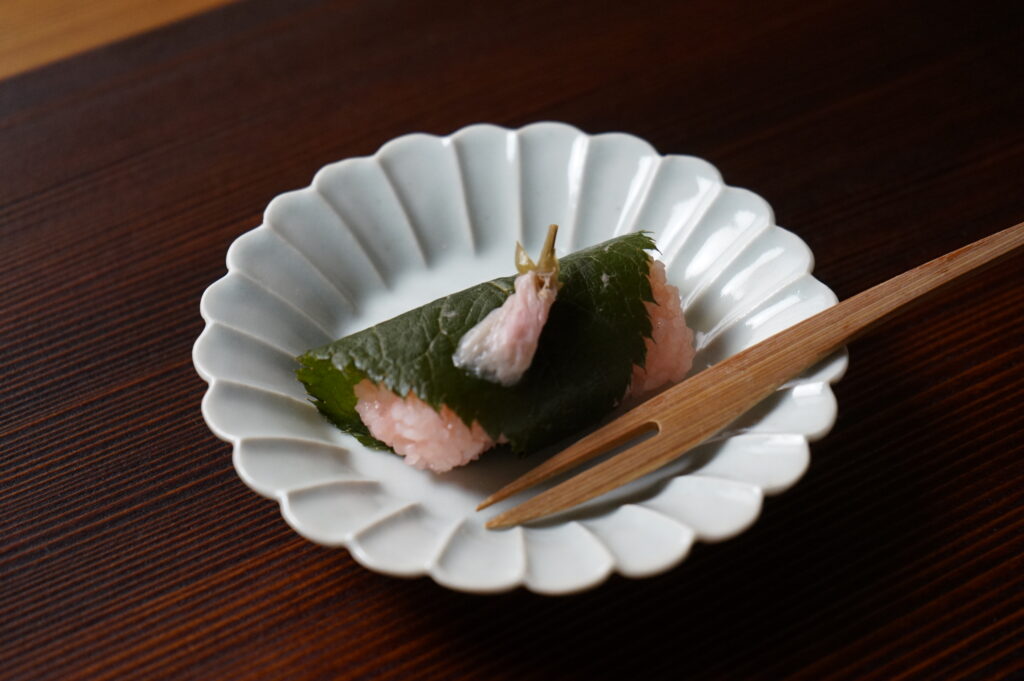
🌸 Signature Spring Ingredients & Recommended Dishes 🌸
✔ Sansai (Wild Mountain Vegetables) – Tara no me, kogomi, and fukinoto are prepared as tempura or rice, offering a pleasantly bitter spring aroma.
✔ Takenoko (Bamboo Shoots) – Carefully simmered to absorb the delicate umami of dashi, bringing out the pure essence of seasonal freshness.
✔ Sakura Tai (Spring Sea Bream) – A luxurious dry-aging technique using sakura leaves and salt imparts a refined aroma to this delicately fatty fish.
✔ Ise Ebi (Mie Prefecture’s Spiny Lobster) – Served with a green pea purée, enhancing its natural sweetness in an elegant and indulgent presentation.
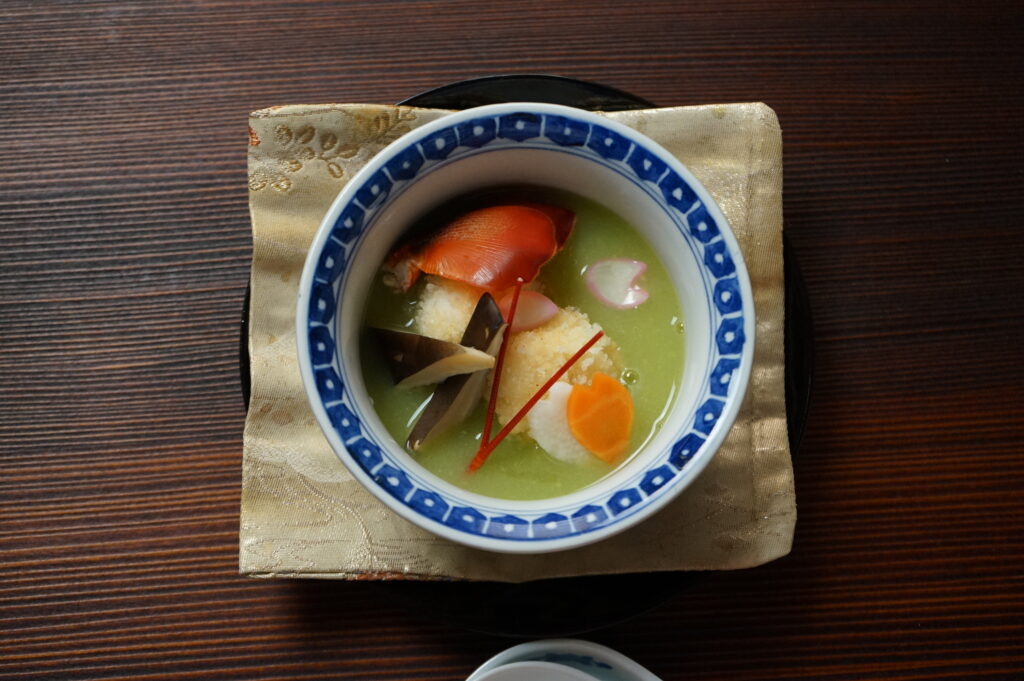
Savor the Arrival of Spring Through a Sakura-Inspired Dining Experience
The cherry blossom season is not only about admiring the flowers—it can also be celebrated through exquisite seasonal cuisine and sake pairings.
At Ise Sueyoshi, the spring-exclusive kaiseki menu is designed to capture the essence of sakura, creating a one-of-a-kind gastronomic experience that allows guests to taste the arrival of spring at the dining table.
✔ For those seeking a vibrant and immersive seasonal dining experience
✔ For those who appreciate the beauty of sakura in refined Japanese cuisine
✔ For those who enjoy pairing premium sake with delicate spring flavors
For those looking to indulge in a sakura-themed culinary experience, this is an unmissable opportunity. As the cherry blossoms bloom, let the harmony of flavors, aromas, and visual beauty transport you to a place of tranquility and appreciation for Japan’s rich seasonal traditions.
Come and rediscover the wonders of Japan’s four seasons through the artistry of kaiseki dining.
Exclusive Dining Experiences
Savor the Depth of Kaiseki Cuisine in an Exclusive 10-Seat Private Setting
Nestled in a quiet corner of Roppongi, Tokyo, Ise Sueyoshi offers a truly special kaiseki dining experience in an intimate 10-seat private space. Here, you can immerse yourself in the essence of Japanese culinary tradition while enjoying a refined yet welcoming atmosphere. Each dish reflects the beauty of Japan’s four seasons, making your dining experience a truly unforgettable moment.
More Than Just a Meal—A Cultural Experience
At Ise Sueyoshi, the focus extends beyond the delicious flavors of each dish—it’s about deeply understanding Japanese culinary culture. Our English-speaking chef carefully explains the background of each dish, the selection of ingredients, and the traditional cooking techniques involved.
This is not just a dinner; it is a cultural journey through food that provides an enriching and meaningful experience.
For international guests, kaiseki cuisine is more than just high-end Japanese dining. It is a form of culinary artistry that captures Japan’s aesthetics and appreciation of seasonal transitions. Understanding the story behind each dish allows guests to experience the cuisine on a much deeper level.
The Art of Kaiseki—A Feast for the Senses
Kaiseki cuisine is a harmonious fusion of ambiance, presentation, taste, and hospitality. Beyond taste, every aspect—including the selection of dishware and the artistry of plating—is carefully considered to create a visually stunning experience.
For instance, during the spring season, our kaiseki menu highlights Japan’s vibrant flavors:
🌸 Clear soup with cherry blossom petals
🌸 Charcoal-grilled bamboo shoots
🌸 Ise lobster paired with spring vegetables in a delicate broth
Each dish is thoughtfully crafted to reflect the changing seasons, allowing guests to truly savor the arrival of spring through flavors, aromas, and presentation.
A Tranquil Escape in the Heart of Roppongi
Although Ise Sueyoshi is located in the heart of Roppongi, stepping inside transports you into a serene and private sanctuary. Unlike bustling restaurants, here you can enjoy a quiet and intimate dining atmosphere, making it the perfect setting for special occasions or a memorable evening with loved ones.
Even first-time visitors to kaiseki cuisine can relax and savor the experience in a welcoming, unpretentious environment.
Kaiseki Cuisine for All Dietary Preferences
At Ise Sueyoshi, we offer specially crafted vegetarian and vegan-friendly kaiseki courses, as well as gluten-free and allergy-sensitive options upon request.
For guests with dietary restrictions, we carefully prepare dishes such as:
Seasonal mountain vegetable tempura
A delicate soup infused with umami-rich kelp and dried shiitake mushrooms
This ensures that everyone can fully enjoy the authentic flavors of Japan’s seasonal cuisine, regardless of dietary preferences or restrictions.
Meet Chef Yuuki
Chef Yuuki Tanaka, the mastermind behind Ise Sueyoshi, is a highly experienced Kaiseki chef with 32 years of expertise in Japanese cuisine. At his intimate counter-style restaurant in Hiroo, Tokyo, he crafts exquisite Kaiseki dishes with meticulous attention to detail, offering a world-class omotenashi experience.
His passion lies in showcasing the finest seasonal ingredients from his hometown of Ise, where Japan’s rich culinary heritage thrives. Every dish is a work of art, carefully prepared to engage all five senses, creating an unforgettable gastronomic journey.
Beyond the cuisine, Chef Yuuki is dedicated to bridging cultures through food. He personally explains each dish in fluent English, ensuring that international guests can fully appreciate the depth of Japanese culinary traditions in a warm and private setting.
Chef Yuuki Tanaka’s Philosophy
✔ Expressing Japanese culture and seasonality through his dishes
✔ Curating personalized Kaiseki experiences based on guests’ preferences
✔ Providing insightful English explanations, enriching cultural appreciation
In the exclusive and intimate ambiance of Ise Sueyoshi, guests not only enjoy exceptional cuisine but also learn about the artistry, traditions, and philosophy behind Japanese fine dining.
When you visit, don’t hesitate to ask about his inspirations, the seasonal highlights, or the unique techniques behind each dish—you will surely be captivated by his passion and expertise.
The Story of Tokyo’s Best Chef, Yuuki Tanaka: Bringing the Blessings of His Hometown to the World
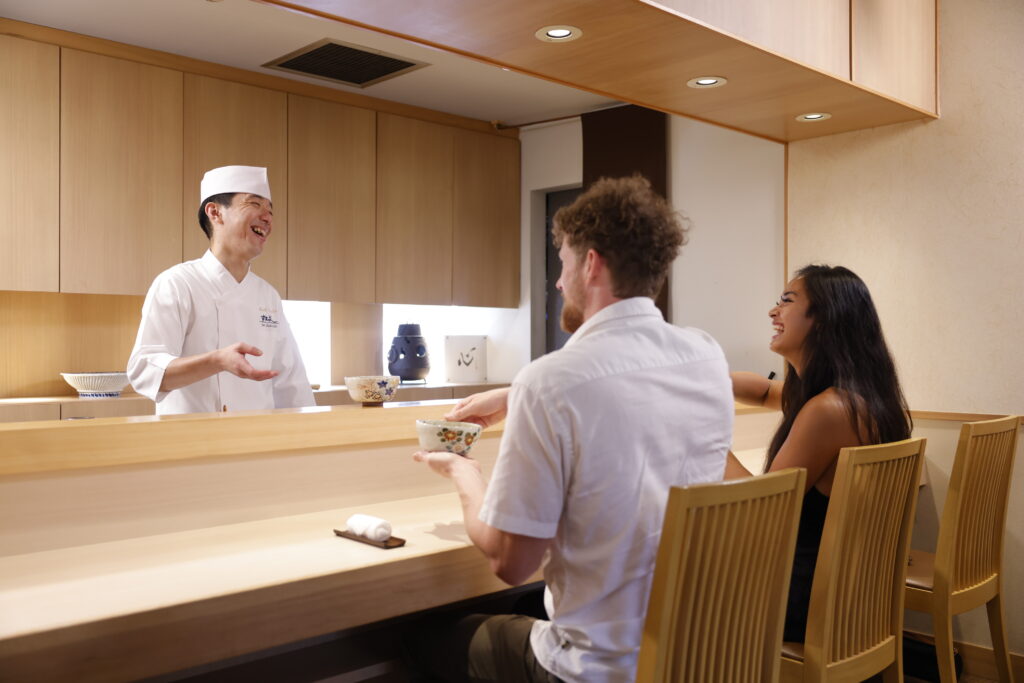
Exclusive Dining Experience
At Ise Sueyoshi, the exclusive 10-seat counter dining experience is more than just a meal—it is a multi-sensory journey into Japanese culinary artistry. Every dish is meticulously prepared, allowing guests to engage all five senses and fully appreciate the elegance of kaiseki cuisine.
One of the unique aspects of dining here is the close interaction with Chef Yuuki Tanaka. With a limited number of guests, each diner has the opportunity to hear firsthand insights about every dish directly from the chef himself.
For international guests, English explanations are available, ensuring that visitors from around the world can fully understand and appreciate the seasonal ingredients, traditional techniques, and cultural significance behind each course.
Why You Should Reserve in Advance
Due to its intimate seating capacity, Ise Sueyoshi remains highly sought after year-round. Reservations often fill up quickly, especially for travelers planning a special occasion or those visiting Tokyo for the first time. We highly recommend securing your spot as early as possible to avoid disappointment.
Enjoy a private counter seating experience, engaging directly with the chef
Relax with detailed English explanations, ensuring an immersive cultural journey
Savor an intimate, hidden-gem atmosphere with only 10 exclusive seats available
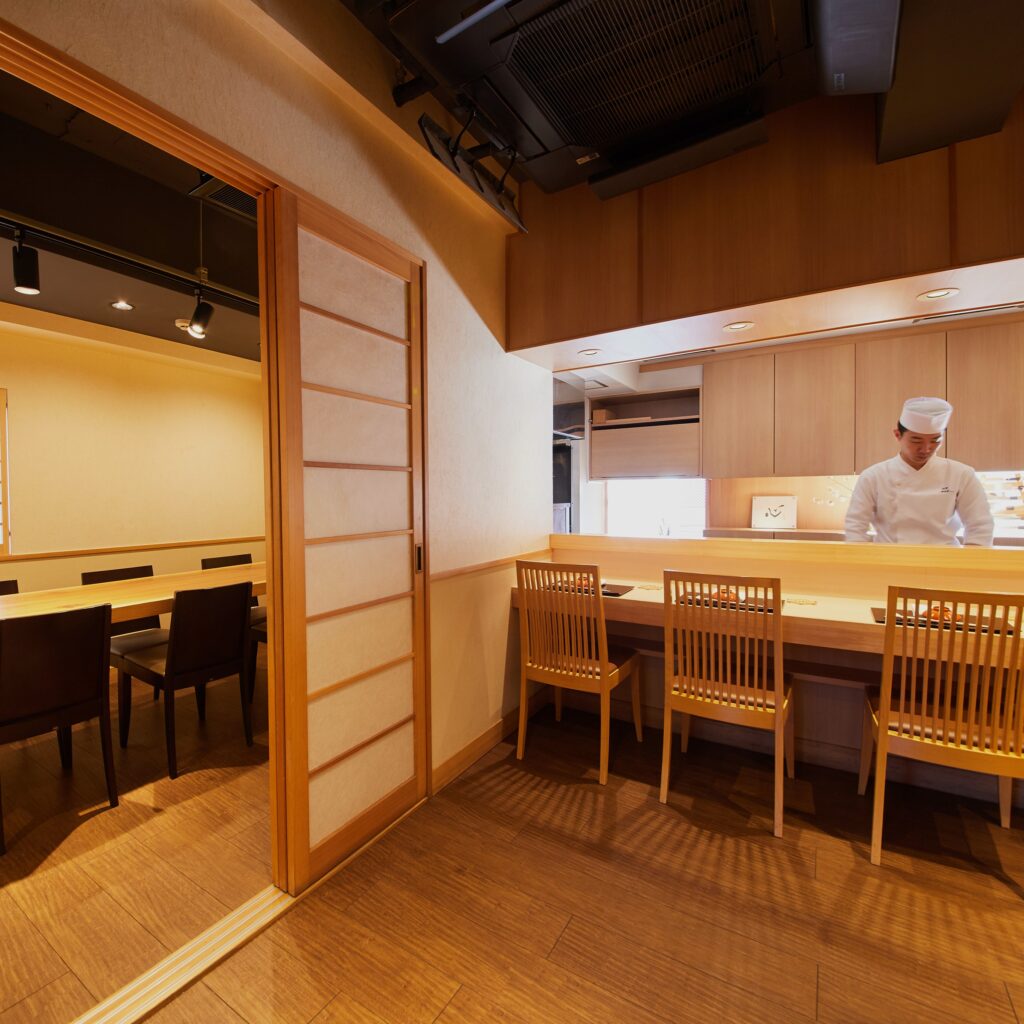
Read more about Sake Pairing:
Enhance Your Kaiseki Experience in Tokyo: Sake Pairing for Ultimate Satisfaction
Apr 2017 • couples
Just a little bit about myself before I dive into the review of Ise Sueyoshi. I am a consultant at a major consulting company so I get to travel and eaten a lot in various places. I have eaten at several Michelin Star rated restaurant so I have a good perspective of what to look for at a restaurant. To start off with the review, I must talk briefly about Mr. Tanaka’s history and Kaiseki cuisine. Mr. Tanaka is originally from Ise which is around 189 miles Southwest of Tokyo. It is mostly known for seafood especially their lobsters. Mr Tanaka is very proud of Ise and draw most of his inspiration from the region. Mr Tanaka received a certificate from the region to recognize his effort to promote Ise and even published a book related to his history with Ise. Mr. Tanaka started working at his dad’s restaurant since he was 4 years old and he is focused on Kaiseki cuisine. Kaiseki cuisines was originally developed to be a simple meal as part of Japanese traditional tea ceremony. It has elevated into an art form over time to stimulate all your senses. Mr Tanaka mastered Kaiseki cuisine which he changes his menu every month according to the season and also select the freshest ingredients to ensure his guest get the best experience. I made a reservation online for me and my wife about a month before we arrive Japan. We were in Japan during the cherry blossom season and therefore cherry blossom was the theme for the Kaiseki. There were 12 courses in total(see menu). Each dish is masterfully presented as if it is a piece of art. It almost pains me to eat them. The highlight is the cherry blossom themed dish as it uses fresh cherry flowers to decorate the dish. I was also intrigued by the venison meat as I have never tried that before and the meat tenderness was superb. The lobster with miso soup is a fantastic combination of flavor as the sweetness of the miso amplify the natural sweetness of the lobster. Mr. Tanaka is almost fluent in English as he stayed in Canada for a year. He had great interaction with me and my wife and answered every question that we have which make it a very enjoyable experience. I got a chance to learn about Kaiseki and also Ise. Judging by the relatively young age of Mr. Tanaka and the skills he already possessed thus far, I predict he will achieve at least a Michelin star or more soon so make reservation soon.
We are proud to continue delivering an exceptional dining experience that earned us the Tripadvisor Travelers’ Choice Best of the Best 2024 award, ranking among the Best Restaurants in Tokyo. Our commitment to excellence in service and our dedication to offering the finest kaiseki dining experience in Tokyo remain unwavering. Discover more about our journey to becoming one of the best restaurants in the city[here].

Visit Ise Sueyoshi
Location: Conveniently located 12 minutes from Roppongi Station and 8 minutes from Hiroo Station.
Hours: Open 5:00 PM – 10:00 PM, reservations only. Closed on Sundays and Mondays.
Book Your Experience ☟
Conclusion
At Ise Sueyoshi, we humbly invite you to experience a dining journey that caters to all dietary needs. Whether you’re vegan, halal, or have specific preferences, we are here to create a memorable and inclusive dining experience for you, especially for special occasions like a honeymoon.
Looking ahead to 2025, we promise to continue striving as the “Best Kaiseki Restaurant,” delivering unique culinary experiences that reflect the beauty and depth of Japanese culture. Reservations are now open through the end of 2025. We encourage you to plan early and join us for a special dining experience. May our dishes and hospitality create cherished memories for your journey.
Recommended Blog Posts
On our blog, we offer further insights into Tokyo’s rich food culture and the unique culinary experiences we provide at Ise Sueyoshi. Be sure to check out these recommended posts:
Hanami in Japan: Cherry Blossoms or Plum Blossoms?
@isesueyoshi
o 🏆 Awarded the prestigious Best Luxury Restaurant by TripAdvisor
o 🌍 Ranked 2nd worldwide, 1st in Japan, and 1st in Asia
o ⭐ Google rating of 4.9 (as of 2024)
o ✅ Vegan-friendly
o ✅ Halal selections
o ✅ Gluten-free options
o ✅ Vegetarian delights
o ✅ Pork-free choices
o ✅ Perfect for pescatarians
o 🌈 Welcoming and inclusive environment for LGBTQ guests
o 🚃 Just a 12-minute walk from Roppongi Station or 8-minutes from Hiroo Station
o ⏰ 5:00 PM – 10:00 PM (reservations-only)
o 📅 Closed on Sun and Mon

